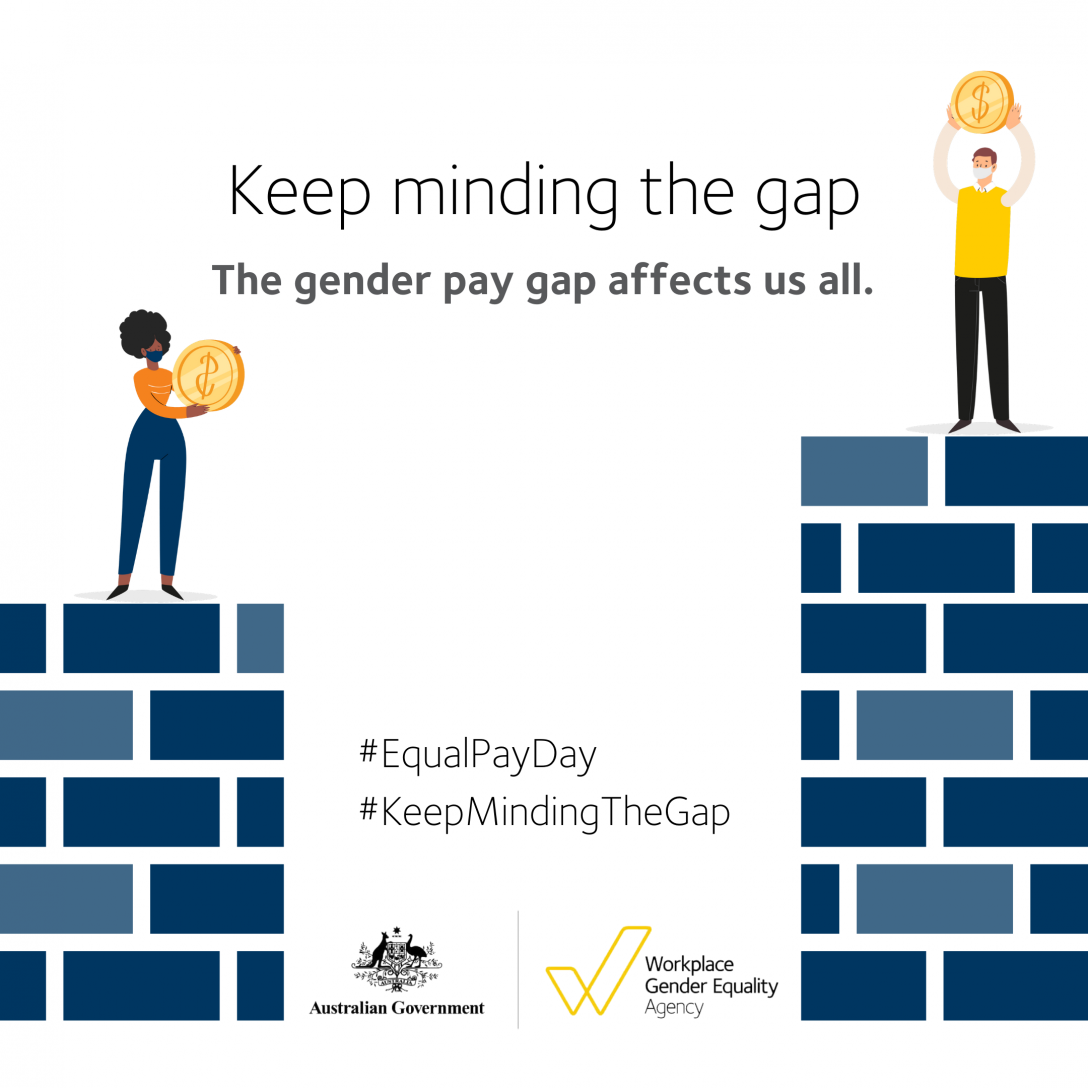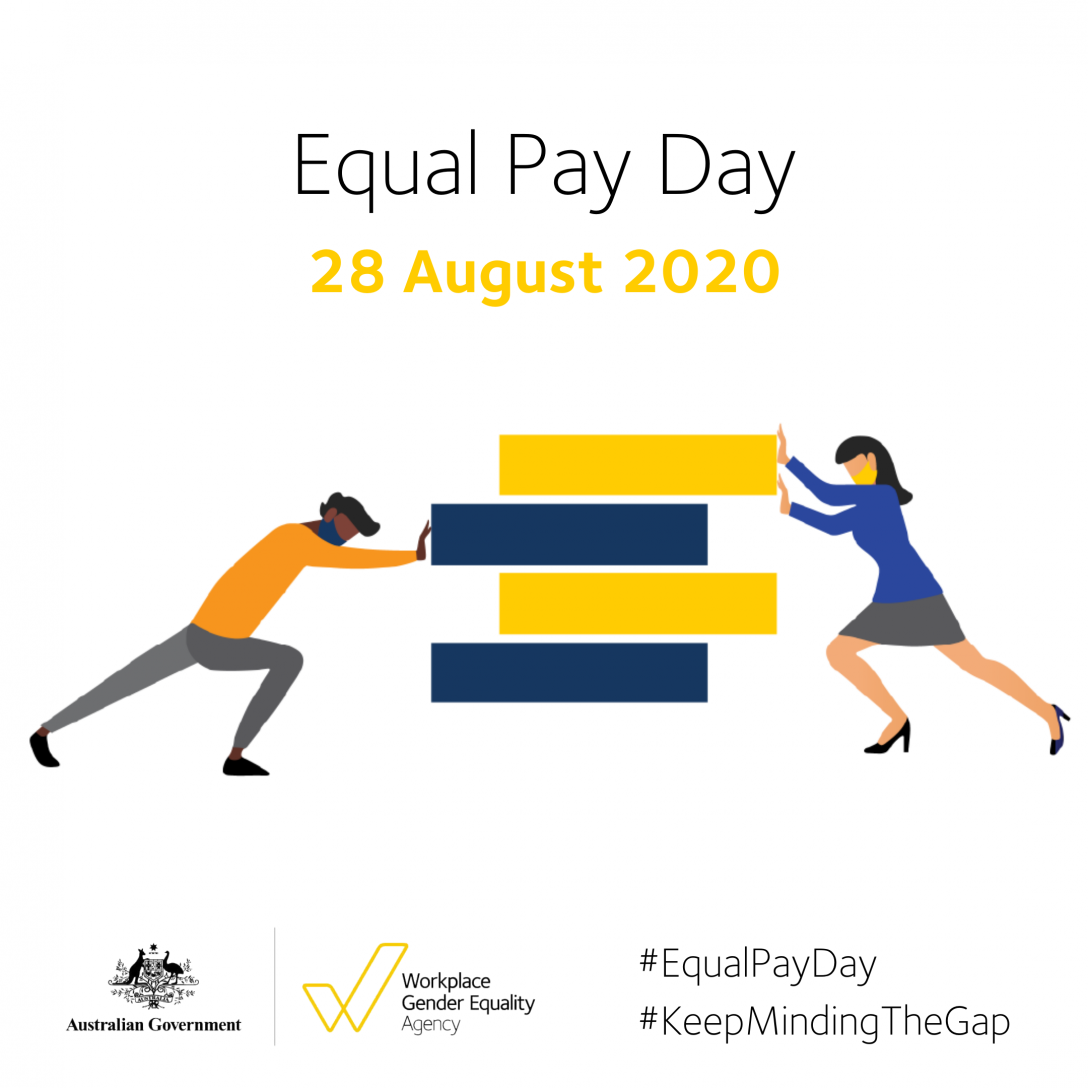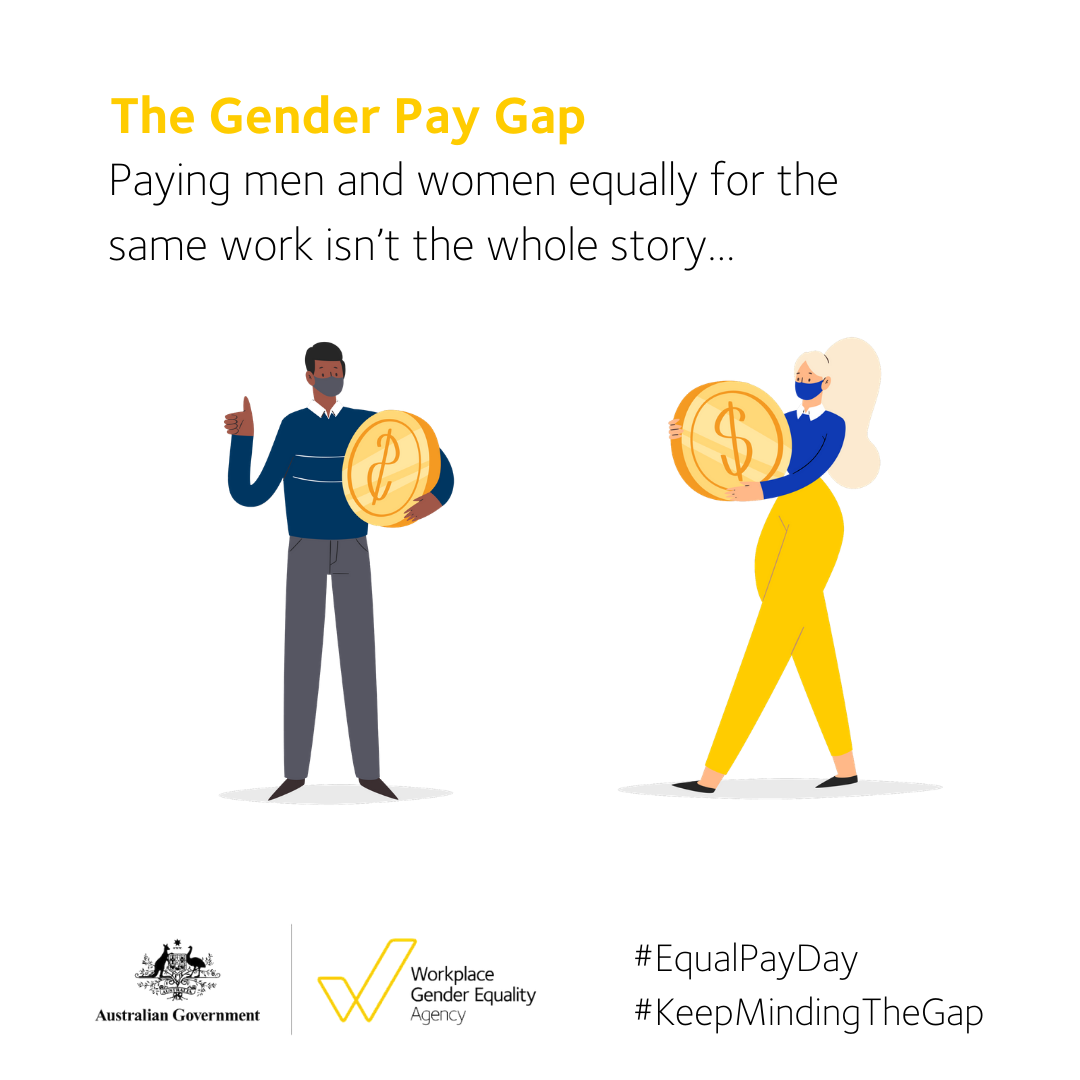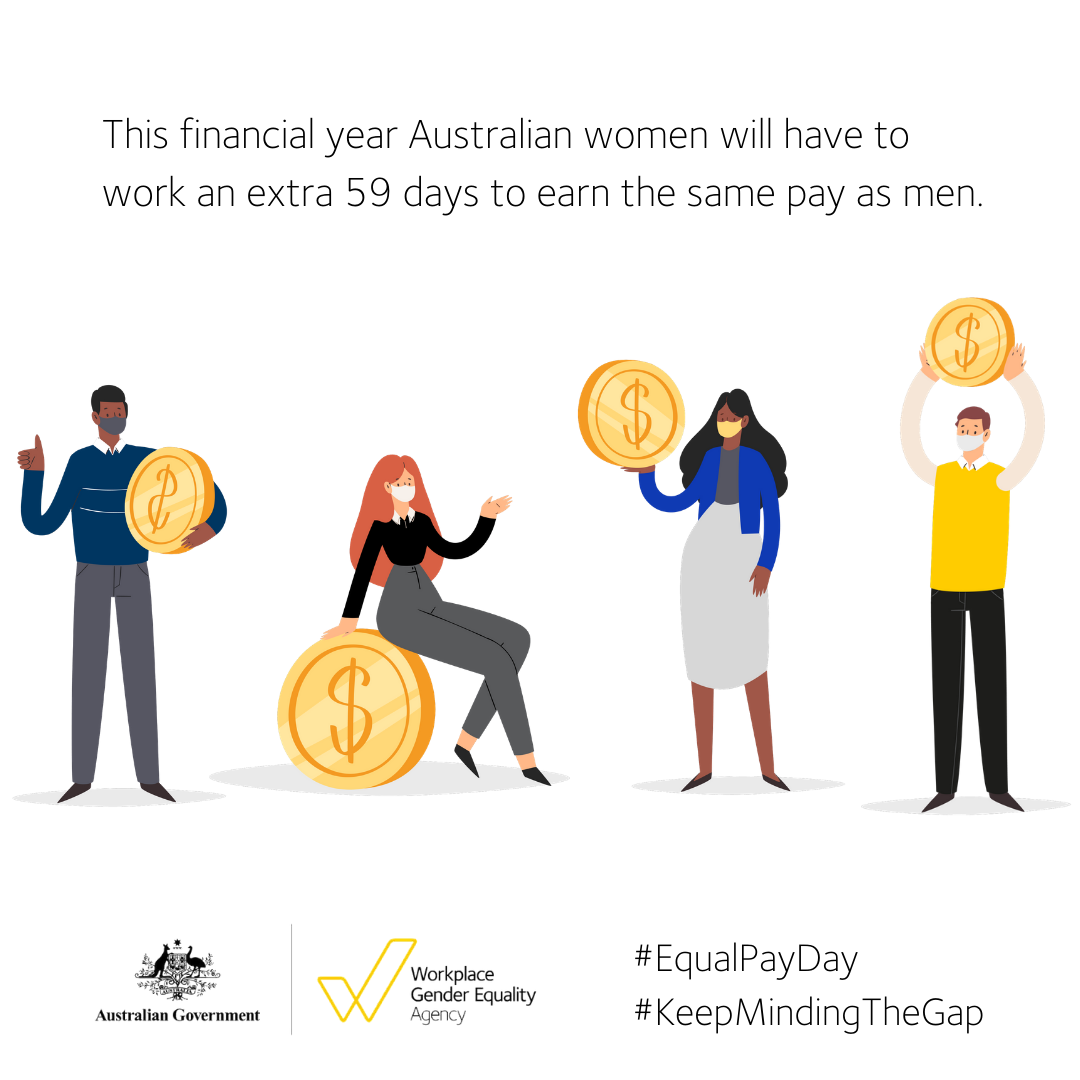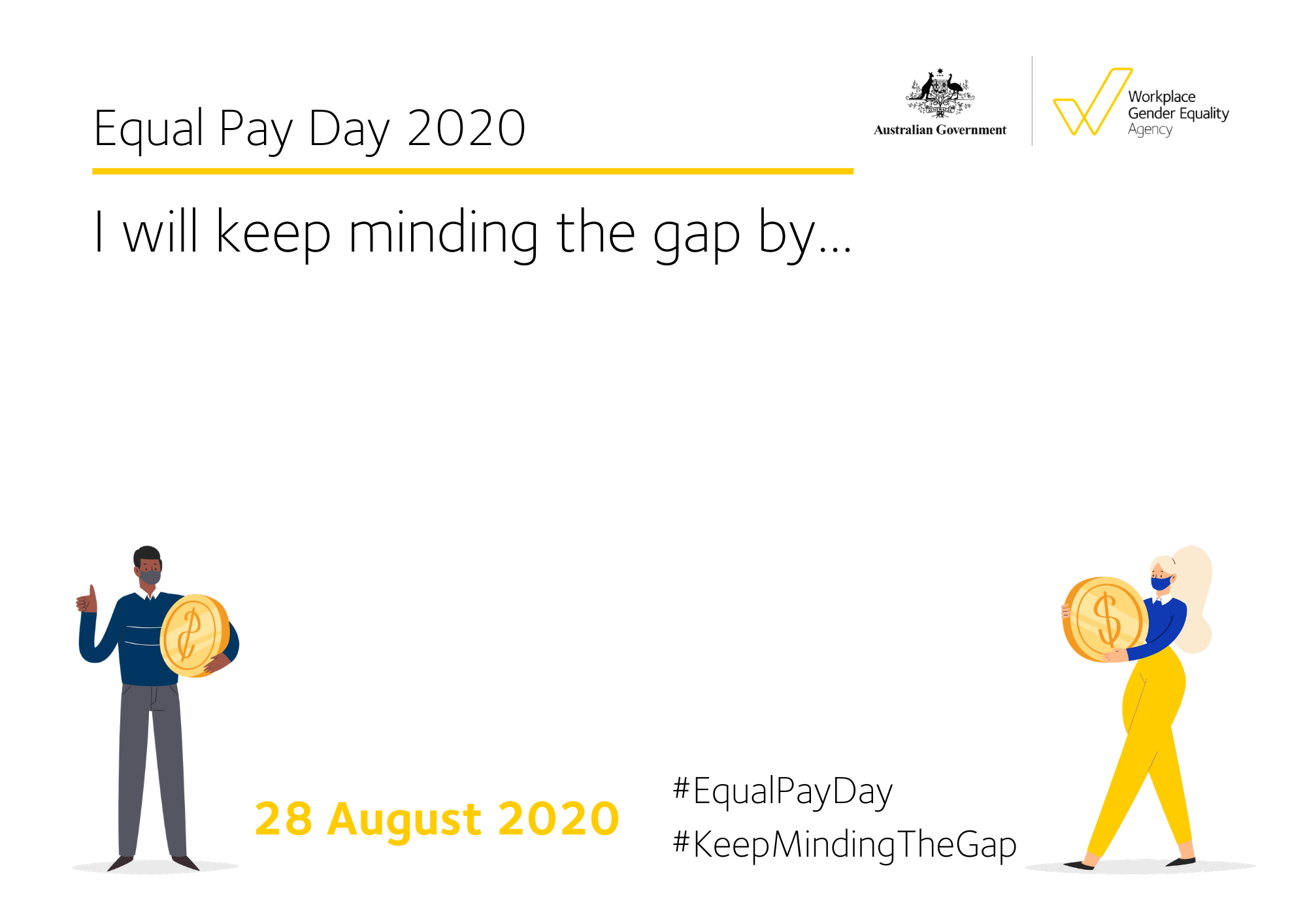Some Equal Pay Days are more equal than others |
We have waited 59 equal days and finally today is Equal Pay Day, Friday 28 August. Equal Pay Day marks the additional 59 days women must work from the end of the last financial year to earn the same amount as men.
In Australia, the national gender pay gap is 14% for full-time employees.
The 14% gender pay gap means that there is a difference of $253.60 per week between women and men’s earnings on average in Australia.
WGEA Director Libby Lyons said that the COVID-19 crisis has had a disproportionate impact on women. "Data would suggest that the COVID-19 pandemic has affected women and men differently. More Australian women than men have lost their jobs since COVID-19 struck. A number of female-dominated industries have suffered the worst of the job losses. All the evidence we have suggests that COVID 19 is seriously jeopardising women’s long-term economic and financial security and workforce participation."
"This is why I am again urging employers to ensure that gender equality is a top business priority in their organisations. I know many employers are doing it tough right now. However, it is critical that the COVID-19 crisis does not see a decline in the many gains we have all worked so hard to achieve over the last few years, such as more women in leadership roles. Women now comprise 39.4% of all managers in WGEA’s dataset."
"Over the period of the GFC, our last economic downturn, the gender pay gap shot up 2.0 percentage points from 15.6% in November 2007 to 17.6% in November 2009. It took us 10 years to bring that pay gap back down to where it is today. We cannot afford to see a repeat of this as we face our first economic recession in almost 30 years. It will be a disaster for the economy and a calamity for Australian women," she said.
Why does it matter?
Equal Pay Day matters because it is a symbol for women’s potential not being fully realised or valued in the workplace.
The national gender pay gap has far reaching consequences for individuals, families and the Australian economy. On average, women today will retire with 40% less superannuation than their male counterparts. The homelessness rate for women over the age of 55 is on the rise, marked by an increase of 31% between 2011 and 2016. Increasing women’s participation in the workforce is also key to boosting Australia’s productivity and innovation.
